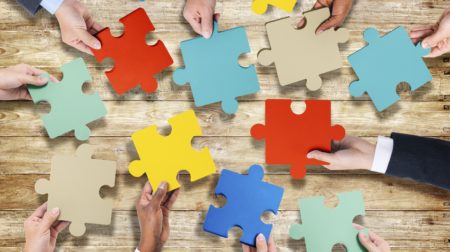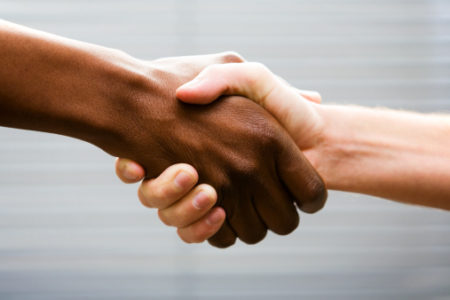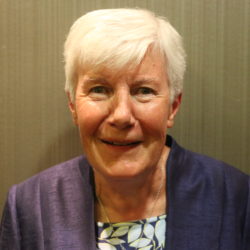South Africa has a long history of racism, discrimination and separation of people according to externals.
1994 saw an end to legislation which supported these practices, but laws do not necessarily bring about instant change. There is still discrimination and separation, although at a much lesser degree. Our society is more integrated, but not everyone is comfortable with our “new” country: sometimes because people of different skin colours or different financial status have never had opportunities to meet, or still entertain deep-seated fears or prejudices.
This was the case when two groups discovered they needed each other.

Ditlhare Mokhema, a social work student studying at the University of Pretoria and assisting at Mercy House – the shelter for victims of domestic violence – felt that something should be done to try and address the racial divide and at the same time help the elderly and the young to reach out to each other.
Inspired by Ditlhare’s idea, the Margaretha Ackerman Old Age Home (that cares for white people) hosted a four day social reintegration of the elderly into the community through a skills transfer community work project. Five residents and thirty two orphans and vulnerable African children, their caregivers and a social worker from Leamogetswe Safety Home participated in this event.
 Colombe Ashborn, Evie Jacobs, Johnny Engelbrecht, Ditlhare Mokhema and Jody Venter
Colombe Ashborn, Evie Jacobs, Johnny Engelbrecht, Ditlhare Mokhema and Jody Venter
Through a situational analysis conducted by Ditlhare at the home for the aged, she found that the elderly residents’ opportunities for spontaneous social interactions were hindered by various physical, emotional and mental health problems. In addition, stereotypes that the elderly are senile, have nothing to contribute to society and deserve to be institutionalised perpetuate social exclusion and marginalisation of the elderly. This resulted in feelings of loneliness and depression which negatively affect their self-perception and view of the world. She also found that these older persons had innate and acquired talents as well as personal and work experiences that could be used to counter feelings of worthlessness and also improve their total outlook on life if they were willing to share their knowledge with other people.
The event had two major goals. These were to demystify the notion that older people have nothing to contribute to the community and to improve the elderly persons’ self-perceptions and view of the world, and to bring the vulnerable children and the elderly people together to interact with each other.
The elderly people built relationships with the children as well as with people in the wider community. For example, they met with prospective sponsors, participated in a radio interview and went on a site visit to Leamogetswe Safety Home where they experienced a different culture. This exposure gave them an opportunity to freely talk about their experiences and skills and their vision for the project. The planning and the implementation of the project gave them a sense of purpose and belonging which had a positive impact on their health in general.
During this time, the thirty two orphans and vulnerable children were taught cooking and knitting as well as art techniques. In addition, they were also helped to improve their reading and counting skills. They especially enjoyed the lessons about personal grooming and, in turn, they had the older folk dancing, singing and laughing. The mutual social interaction with the residents helped to improve the children’s social skills as most of them had limited interaction with older people in their communities.
The strength, determination and active participation of the elderly people contributed to the success of this project because they really wanted to help improve the children’s skills and so influence their future.
This project also had a positive impact on the children.
According to the Statistician General (2014), black youth in South Africa have lost out in acquiring skills and this has led to youth unemployment. Furthermore, these two social challenges (lack of skills and unemployment) are closely linked to high levels of poverty and crime as well as widening socio-economic inequality gap.

After being empowered with the practical skills and exploring and improving their existing talents, the children said that they would try to generate additional income for themselves and their safety home. They were keen to bake confectionaries, to knit gloves and scarves and also to use their artistic talents in order to sell the articles they made to raise the funds – a little is better than nothing.
The older people’s efforts improved the children’s level of self-confidence and general outlook on life. They also instilled a sense of belief in the children that they are capable of improving their current and future living circumstances.
The social reintegration of the elderly into the community through the skill transfer community project embodied the spirit of Ubuntu (a person is a person through other people) and respect for diversity in terms of age, race, gender and disability. Through this project, the older white people’s socio-emotional wellbeing improved in the process of investing in and improving the socio-economic circumstances of young black children. This project taught us that we all need each other to survive and we all have something to give in order to better the living circumstances of others.
The elderly’s contribution to community up-liftment remains significant and by engaging in a project like this, they felt empowered and useful, and this helped in restoring their dignity. There are plans to expand this project during this year.
Ditlhare Mokhema and Colleen Wilkinson rsm
South African Province


